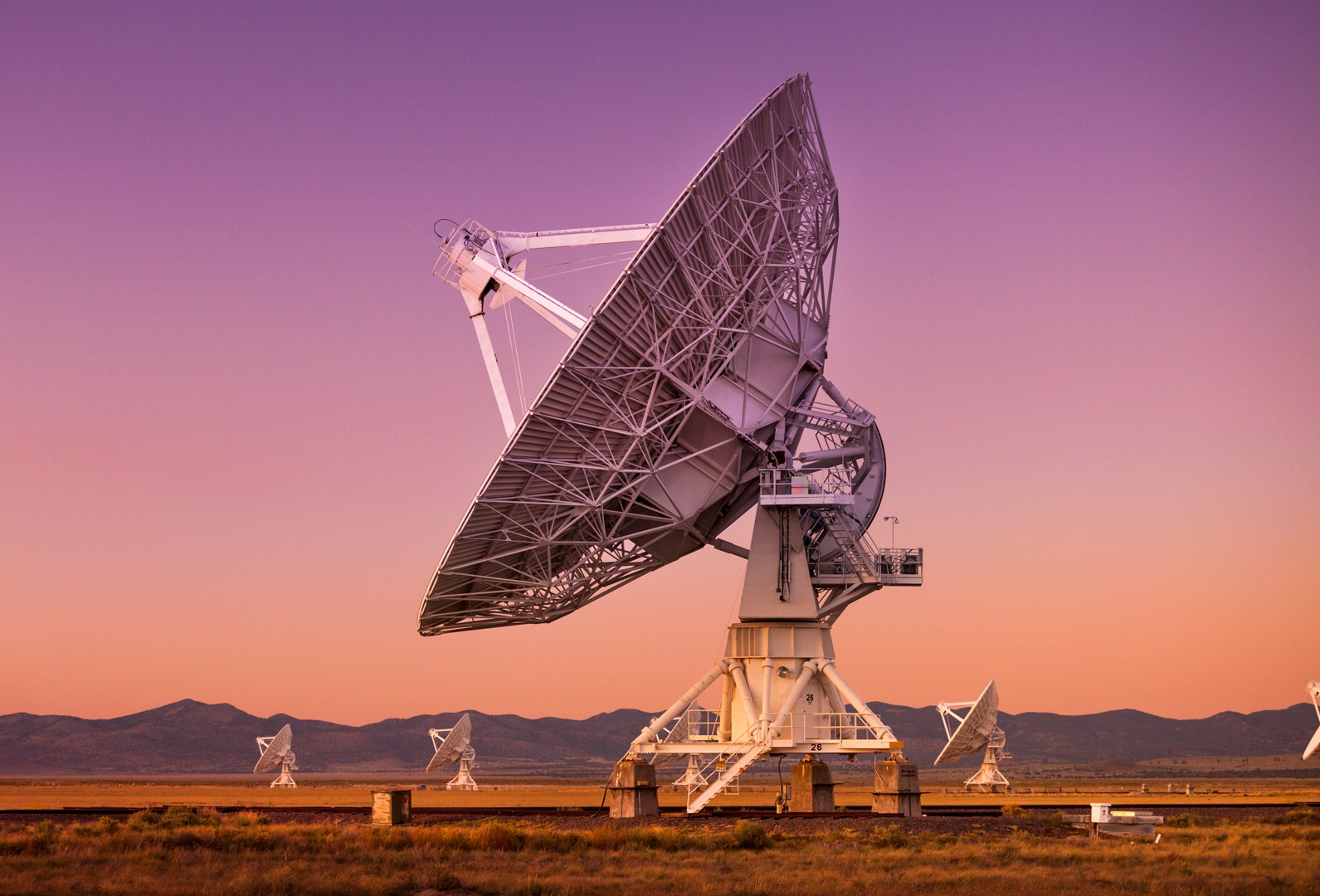
Radio telescopes are truly fascinating pieces of technology that have allowed humanity to explore the vast depths of the universe. These incredible devices use radio waves to detect and study celestial objects, giving us glimpses into distant galaxies, stars, and even the remnants of the Big Bang itself. In this article, we will delve into 15 unbelievable facts about radio telescopes that will leave you awestruck. From their massive size and incredible sensitivity to their role in unraveling cosmic mysteries, radio telescopes have revolutionized our understanding of the universe. So, fasten your seatbelts as we embark on a journey through the vast expanse of space, exploring the wonders of radio telescopes and the mind-boggling discoveries they have made.
Key Takeaways:
- Radio telescopes can detect invisible objects like distant galaxies and remnants of the Big Bang, expanding our understanding of the universe beyond what the naked eye can see.
- The collapse of the Arecibo Observatory in 2020 marked the end of its 50-year reign as the world’s largest single-dish radio telescope, showcasing the ever-evolving nature of astronomical technology.
The Invention of the Radio Telescope
The radio telescope was invented in the 1930s by Karl Jansky while he was working for Bell Labs. It was originally used to detect and study radio waves from cosmic objects.
The Largest Radio Telescope in the World
The Arecibo Observatory in Puerto Rico held the title of the largest single-dish radio telescope for over 50 years, until its collapse in It had a diameter of 305 meters and played a significant role in astronomical discoveries.
Radio Telescopes can Detect Invisible Objects
Unlike optical telescopes, radio telescopes can detect objects that are invisible to the naked eye. They can capture signals emitted by distant galaxies, pulsars, quasars, and even remnants of the Big Bang.
Radio Telescopes Can Observe 24/7
Radio telescopes can operate day and night, regardless of weather conditions. This allows astronomers to gather consistent data and study celestial objects continuously.
The WOW Signal
In 1977, the Big Ear radio telescope at Ohio State University detected a peculiar and strong radio signal from outer space. It lasted for 72 seconds and was named the “WOW signal,” but its source remains a mystery.
The First Image of a Black Hole
In 2019, an international team of scientists used a network of radio telescopes called the Event Horizon Telescope to capture the first-ever image of a black hole. The image confirmed Albert Einstein’s theory of general relativity.
Radio Telescopes Can Measure Cosmic Background Radiation
By studying cosmic background radiation, which is the faint afterglow of the Big Bang, radio telescopes have provided valuable insights into the early universe and the formation of galaxies.
SETI and the Search for Extraterrestrial Intelligence
Radio telescopes are used by the Search for Extraterrestrial Intelligence (SETI) to listen for potential signals from intelligent civilizations in outer space. Although no confirmed signals have been detected, the search continues.
VLBI – Connecting Radio Telescopes Worldwide
Very Long Baseline Interferometry (VLBI) combines the data from multiple radio telescopes located around the world to create a virtual telescope as large as the Earth. This technique allows for high-resolution imaging of cosmic objects.
The Green Bank Telescope and its Quiet Zone
The Green Bank Telescope in West Virginia has a unique feature called the “Quiet Zone.” It is an area surrounding the telescope where all forms of electronic interference are strictly limited to allow for precise observations.
Mapping the Universe with Radio Telescopes
Radio telescopes have played a crucial role in mapping the distribution of galaxies in the universe. By observing the radio emissions from distant galaxies, astronomers can create detailed maps of the cosmic web.
Pulsars – Precise Celestial Clocks
Pulsars are highly magnetized rotating neutron stars that emit beams of electromagnetic radiation. Radio telescopes have been instrumental in discovering and studying these celestial objects, which act as precise clocks in the cosmos.
The Square Kilometre Array – A Next-Generation Telescope
The Square Kilometre Array (SKA) is an upcoming radio telescope project that will consist of thousands of dishes spread across multiple continents. Once completed, it will be the largest and most sensitive radio telescope ever built.
RFI – Dealing with Radio Frequency Interference
Radio Frequency Interference (RFI) poses a challenge to radio telescopes as it can disrupt the detection of faint signals from space. Efforts are made to mitigate RFI through shielding, signal processing, and selective frequency bands.
The Ongoing Discoveries of Radio Telescopes
Radio telescopes continue to make groundbreaking discoveries, expanding our knowledge of the universe. From studying the cosmic microwave background radiation to exploring exoplanets, these remarkable instruments unlock the secrets of the cosmos.
Conclusion
The 15 unbelievable facts about radio telescopes highlight the remarkable capabilities and contributions of these astronomical instruments. From unraveling the mysteries of the universe to the search for extraterrestrial life, radio telescopes play a crucial role in expanding our understanding of the cosmos.
Conclusion
In conclusion, radio telescopes are incredible scientific instruments that have revolutionized our understanding of the universe. From discovering distant galaxies and pulsars to detecting cosmic microwave background radiation, these telescopes have provided us with invaluable insights into the cosmos. The development of sophisticated radio telescope arrays, such as the Very Large Array (VLA) and the Square Kilometer Array (SKA), has further expanded our capabilities and allowed us to delve even deeper into space.
With ongoing advancements in technology and the construction of new telescopes, we can expect more astonishing discoveries in the future. Radio telescopes continue to play a crucial role in helping us unravel the mysteries of the universe and broaden our knowledge of its origins, composition, and evolution. They are truly remarkable tools that enable us to explore the vastness of space like never before.
FAQs
1. How do radio telescopes work?
Radio telescopes work by collecting and analyzing the electromagnetic radiation that is emitted by celestial objects in the radio frequency range. They consist of a large parabolic dish or an array of smaller dishes that focus the incoming radio waves onto a receiver. The receiver then converts the waves into electrical signals, which can be processed and analyzed by astronomers to gain insights into the nature of the objects emitting the radiation.
2. What can radio telescopes detect?
Radio telescopes can detect a wide range of celestial phenomena, including distant galaxies, radio-emitting stars, pulsars, quasars, and cosmic microwave background radiation. They are particularly useful for studying objects and phenomena that are radio-bright, allowing astronomers to explore different wavelengths of light and gain a comprehensive understanding of the universe.
3. How are radio telescopes different from optical telescopes?
Unlike optical telescopes that observe visible light, radio telescopes observe the longer wavelengths of the electromagnetic spectrum. This enables them to capture radio waves that are emitted by various objects in space, which are often undetectable or invisible to optical telescopes. Additionally, radio telescopes can observe the universe even during daytime or in cloudy conditions since radio waves are not affected by atmospheric interference like visible light.
4. Where are some famous radio telescopes located?
There are several renowned radio telescopes around the world. Some notable examples include the Arecibo Observatory in Puerto Rico, the Parkes Observatory in Australia, the Green Bank Telescope in West Virginia, and the LOFAR (Low-Frequency Array) in the Netherlands. These telescopes have contributed greatly to astronomy and have played a significant role in numerous groundbreaking discoveries.
5. What is the future of radio telescopes?
The future of radio telescopes looks promising. The construction of the Square Kilometer Array (SKA) is underway, which will be the world’s largest radio telescope and will enable astronomers to explore the universe with unprecedented sensitivity and resolution. Additionally, advancements in technology will lead to more sophisticated instruments and improved data analysis techniques, allowing us to unlock even more secrets of the universe.
Was this page helpful?
Our commitment to delivering trustworthy and engaging content is at the heart of what we do. Each fact on our site is contributed by real users like you, bringing a wealth of diverse insights and information. To ensure the highest standards of accuracy and reliability, our dedicated editors meticulously review each submission. This process guarantees that the facts we share are not only fascinating but also credible. Trust in our commitment to quality and authenticity as you explore and learn with us.


